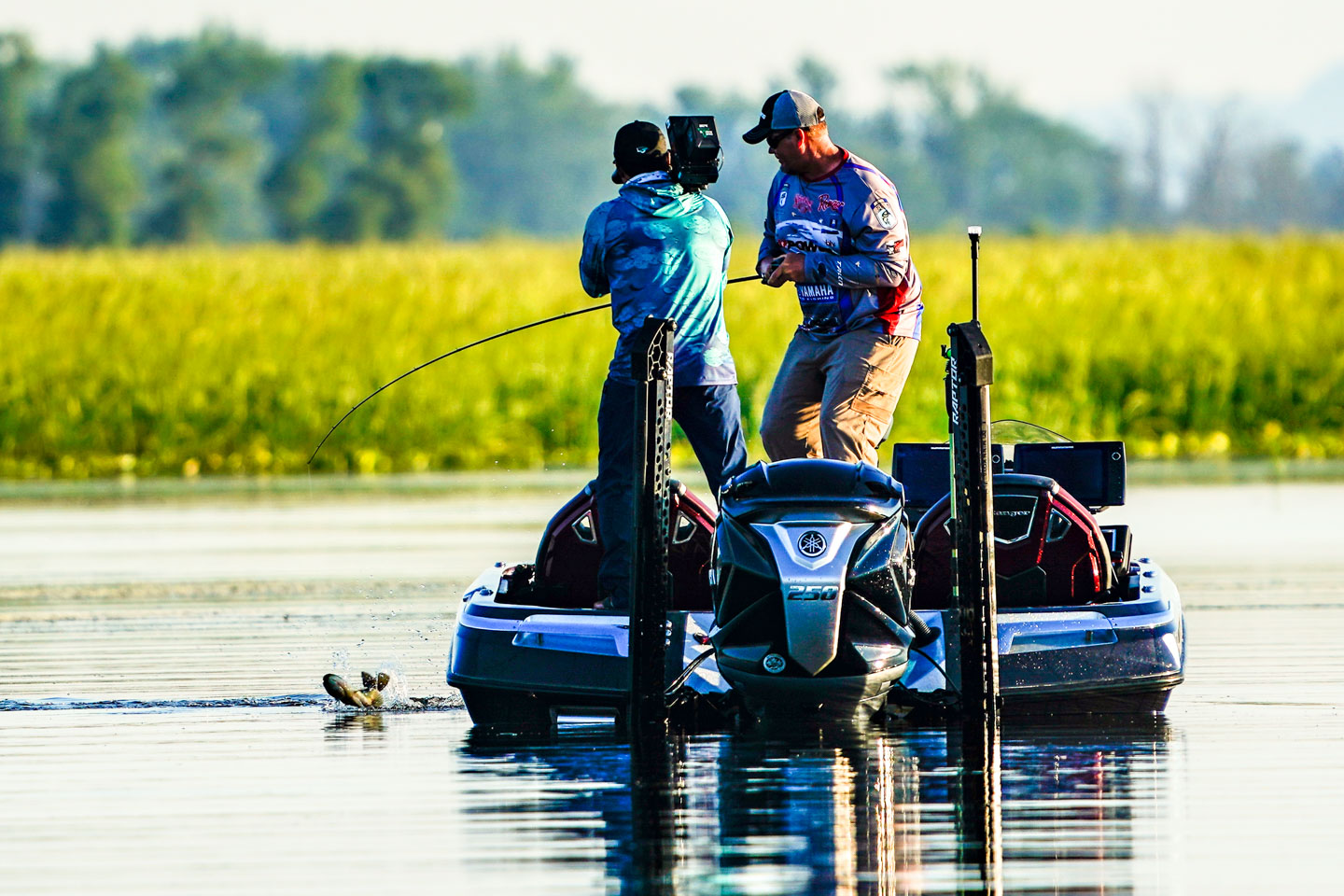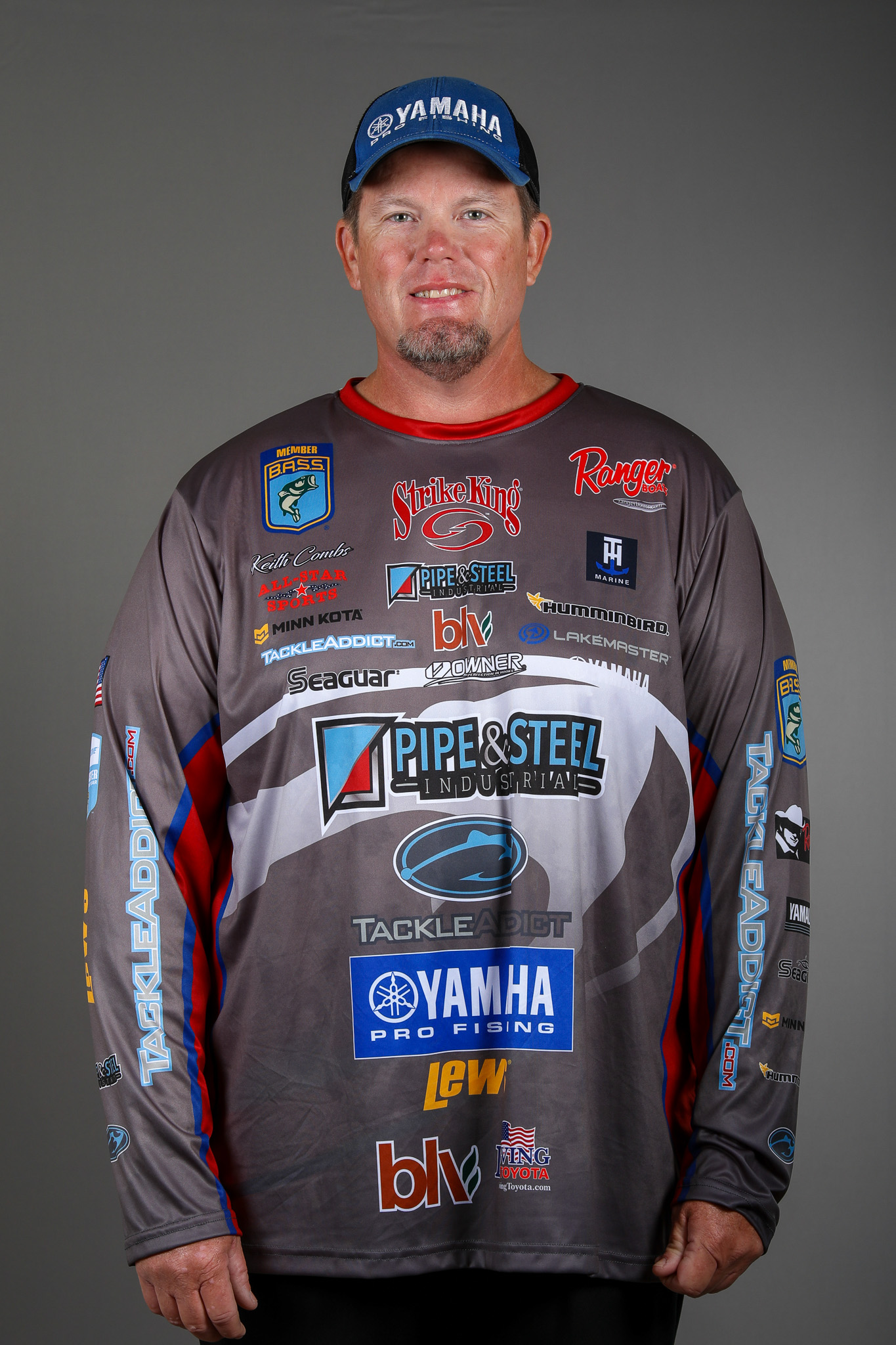
Many of my best moments as a professional angler have come with a crankbait rod and reel in my hand. It’s no secret that’s how I like to fish. What might not be as well-known, however, is that until just a few years ago, I basically used just one or two basic combos to get through the year. Since then I’ve expanded a lot, and while I haven’t added a major victory that way, I feel it’s coming because I’m a lot more efficient. Simply put, I lose far fewer fish.
Today for most of my cranking I use three different rods and three different reels. The rods are all from the Shimano Zodias lineup – the 7-foot, 2-inch medium-heavy glass, the 7-foot, 6-inch medium-heavy glass and the 7-foot, 11-inch medium-heavy glass.
I know that there’s been a longtime debate over graphite versus glass versus composites. There’s a lot of reasons I think you should have at least some glass in your cranking rods. Mostly it comes down to forgiveness. At least with the Zodias models, they bend and flex perfectly, so when a big fish surges boatside it won’t pull off. Additionally, these rods load up perfectly for long casts, and the long, split-grip handles allow me to make two-handed throws that go long distances.
The 7-foot, 2-inch model gets the call for lipless baits, shallow runners and medium divers up to about a Strike King 5XD. The 7-foot, 6-inch is probably the most versatile for midrange to deep cranking. I use it for lures including a 5XD, 6XD and 8XD. The 7-foot, 11-inch is reserved exclusively for the 10XD.
If you are on a budget, any of the three can handle that full range in a pinch, but the variety makes me more effective. I also have slightly different reel choices for the three – the 7-foot, 2-inch gets a Shimano Curado DC 150, while the others get the 200-sized version of the same reel. I need that extra spool capacity for the big baits.
I know a lot of you will be surprised that all of those reels have 7.4:1 gear ratios. Historically, a lot of avid crankers used reels in the 5:1 range. I find with a reel that slow it’s tough to keep up with a fish that’s coming at you. With the 7.4:1 I can always slow down. Believe me, when the water temperature is over 70 degrees you often cannot crank it too fast. The bass will be able to get anything you can do.
While those three combos take care of almost all of my cranking, there is a fourth setup that gets the nod when I’m cranking in cold climates with water temperatures in the 40s. It’s a 7-foot, 2-inch medium-heavy glass Expride model paired with a Metanium MGL. Usually in that scenario I’m fishing flat-sided baits and smaller lures like a 3XD, and this is the one instance where I slow down to a 6.2:1 gear ratio.
This setup is a totally different animal. The rod has a lot more backbone than the Zodias models. I’m not as worried about fish surging and jumping and going crazy, and I’m using smaller hooks. Also, that MGL is super-sensitive. When it’s warmer out, you usually know immediately you have a fish, but in the colder times the bite may just be a slight “tick.” With this rig you can feel that tick through the reel.
This is the system that works for me. Your mileage and your preferences may vary, but I guarantee you that cranking can be your best friend or your biggest heartbreak. If you use the right tackle you’re more likely to end up happy with the outcome.





